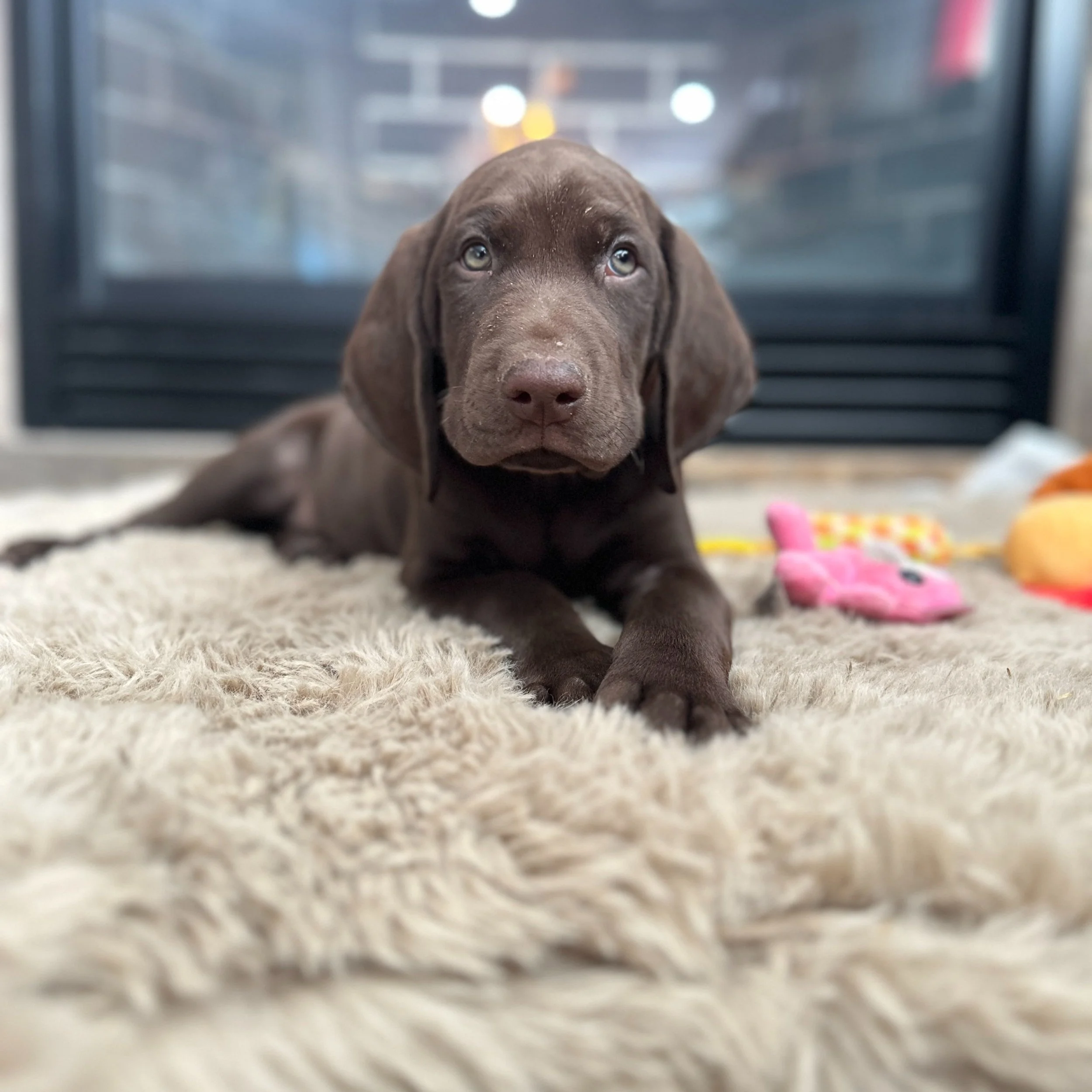Claims have been made that biosensor training produces super puppies and we agree. BioSensor training is a simple yet highly effective means of handling a puppy. 3 days old and until 16 days old the puppies go through various exercises lasting between 3 to 5 seconds. What this does is it teaches the puppy how to handle stress and still be able to function at peak performance.
Exercise performed during this training include: tactile stimulation, head up position, head down position, supine position, and thermal stimulation.
BioSensory Training
Next Steps
Following the 16 days our training includes but not limited to the following water, sound, bird, kennel, car, leash, and e-collar.
Water
Before taking your puppy home he/she will have water exposure. We find this step crucial to identify the puppies readiness for a water fowl home. Some puppies are hesitant while other jump right in. For those puppies with hesitation we are right next to them the entire time encouraging them until we can build the confidence the puppy needs to see how fun water is and where all the ducks hangout. Another reason we get the puppies in water before going to the perfect home is that every puppy coming out of Secret Squirrel Kennels should be natural ability ready. We highly encourage those who love their puppies as much as us to get their natural ability certification through NAVHDA.
Sound Sensitivity
When it comes to puppies nothing excites us more than seeing a puppy on point. Once BioSensor training is completed we move on to the Birddog Training. Our next big task is getting the puppy adjusted to sounds. At this point in time they will have their eyes/ears open and be getting around much better. There are many different ways we go about this type of training for example we may have the television on a little louder so they can hear it from their whelping box or leave some music on for them to hear. In progressing with sound we move onto sound correlated to positive stimulation we do this during feeding. This will get the puppy excited now when they hear sounds because they know the positive reward (fooood!) is coming. Once the puppies show they have no aversion to sound with every feeding we will bang pots and pans together. Finally the exciting time has arrived where we use a pop sound to simulate the sound of gun fire.
Leash and E-collar
Wearing a E-collar for training and hunting purposes is very common practice as it yields results as well as additional safety precautions acting as an extension to a leash when used properly. So why not get your puppy ready for the adventures to come. This same practice goes for the leash, though you will rarely see a birddog with a leash in the field, using a lead is great way to teach a dog whoa, here (the 2 non-negotiables), and heel. We want your puppy to know the feel of the weight of the collar and leash. At about 6 weeks of age they will begin dragging the lead. Also, they will learn during this process that the collar and leash means work mode which is essential for puppies as we have all seen the full puppy mode activated.
Bird Intro
Not only do the dogs have a blast with this process but so do we! Pointing dogs point because they learn they can’t catch wild birds. As early as 4-5 weeks we elicit this response from our puppies. Puppies will be introduced to live birds in a group a long with an individual setting. Through this process their natural abilities of pointing, stalking, and scent work are put to the test. We want to keep this exciting so make sure to not over stimulate the puppies by ending the process on a high note with lots of praise.
Kennel and Truck Rides
Kennels and truck rides can be a very scary thing for these tiny puppies we want to help the puppy to learn how to cope through these stressful situations so what better way then with mom around. We allow the puppies to start off in the kennel with mom and then slowly they will eventually be in the kennel on their own. Bonus training the puppy is also introduced to a doggy door which allows them to learn how to go in and out of it.

